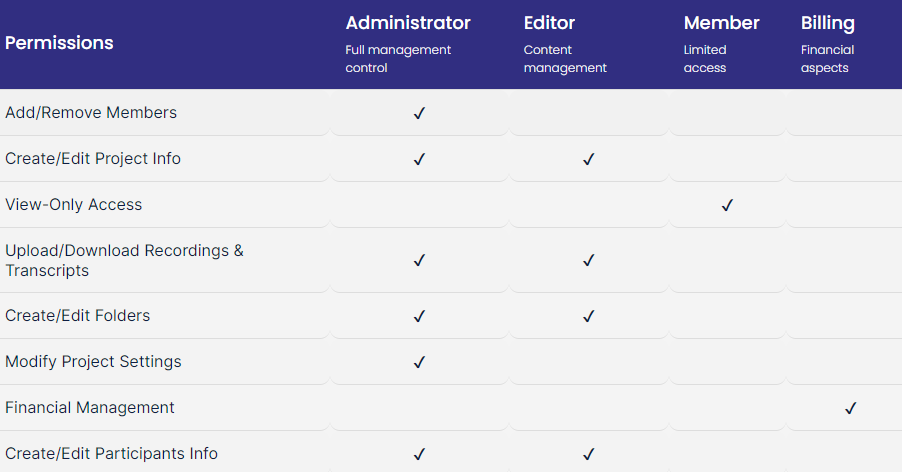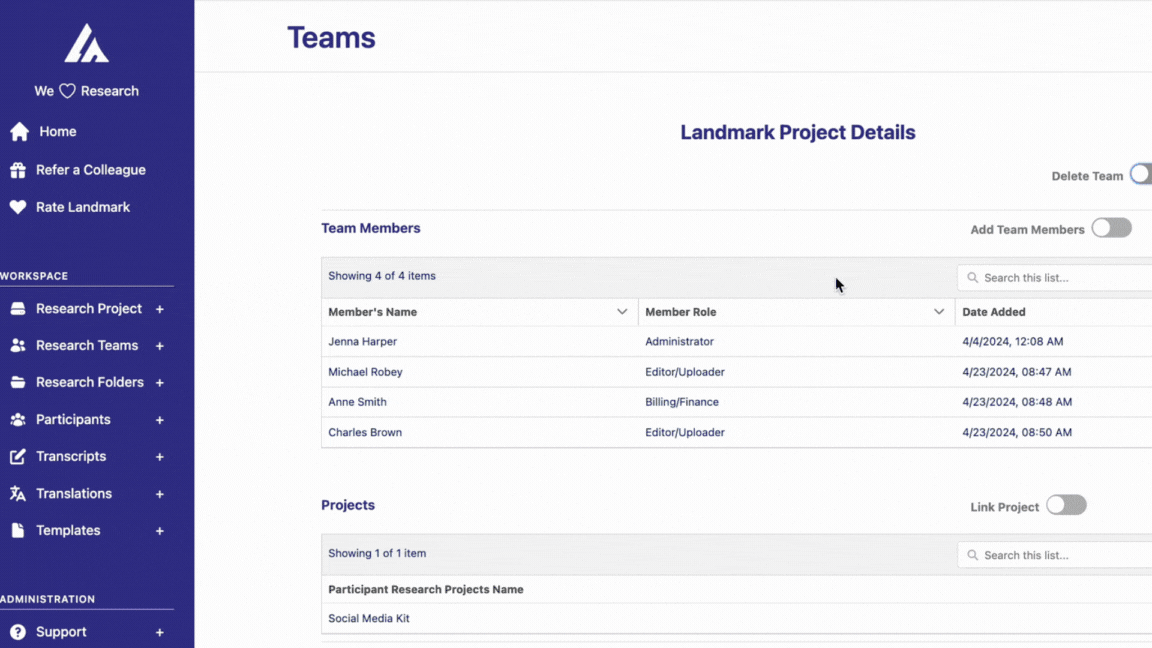Optimizing Team Management
Dr. M, a behavioral science researcher at a leading university, needed a centralized solution to manage her diverse team and multiple research projects.
Background
Dr. M, a leading researcher in behavioral science at a leading university,
often juggles multiple research projects simultaneously.
Her team consists of diverse roles, including data collectors, data analysts,
and administrative assistants.
Dr. M needed an efficient way to manage these teams, ensure secure access to sensitive
files, and maintain oversight of the entire research process.
Challenges
Before using Landmark Associates’ new feature, Dr. M faced several challenges
- • Managing multiple projects with different teams was cumbersome and time-consuming.
- • It was difficult to assign and manage specific tasks to team members, leading to confusion and inefficiencies.
- • Dr. M struggled to maintain visibility over the progress of each team, especially in monitoring file uploads and access permissions.
- • Ensuring that only authorized personnel accessed sensitive data was a constant worry.
Solution
Landmark Associates' new Teams feature allowed Dr. M to create dedicated research teams and invite coworkers to collaborate efficiently on various projects.
- ✔ Dr. M could set up multiple teams for different projects.
- ✔ She assigned roles based on activities. For instance::
- • Team Member: Assigned to data collection, given the role to upload and download files.
- • Team Member B: Focused on data analysis, granted access to audio files and transcripts.
- ✔ As the Principal Investigator, Dr. M could monitor file uploads and maintain visibility over all team activities, providing full control.
- ✔ Only team members could see the files relevant to their roles, enhancing security.
- ✔ Administrative assistants had access only to invoices, ensuring sensitive data remained protected.
 Customized Role Management: Enhance Team Efficiency with Targeted Permissions and Roles
Customized Role Management: Enhance Team Efficiency with Targeted Permissions and Roles
Implementation
Dr. M implemented the new Teams feature, making sure that each had a clear framework for data management and team collaboration, and enhancing the efficiency and effectiveness of her research projects.
- ▸ Project A: Focused on adolescent behavioral patterns, she created a team with specific roles for data collection, analysis, and oversight.
- ▸ Project B: Investigating stress factors in urban environments, she set up another team with similar role-based access tailored to the project’s needs.

Results
Landmark Associates’ new feature significantly improved team collaboration, efficiency, oversight, and data security.
- ✔ Teams worked more cohesively, with clear roles and responsibilities.
- ✔ Task assignments were simplified, reducing confusion and increasing productivity.
- ✔ Dr. M had real-time visibility of all team activities, ensuring project milestones were met.
- ✔ Sensitive data remained secure, accessible only to authorized personnel based on their roles.
Implementing Teams new feature transformed Dr. M's approach to
managing her research projects. By creating multiple research teams
with role-based access, she enhanced collaboration, efficiency, and
security within her team.
This case study demonstrates the feature’s
potential to streamline research processes and facilitate seamless
teamwork in academic environments.
How could it improve collaboration and efficiency
of your research projects?
